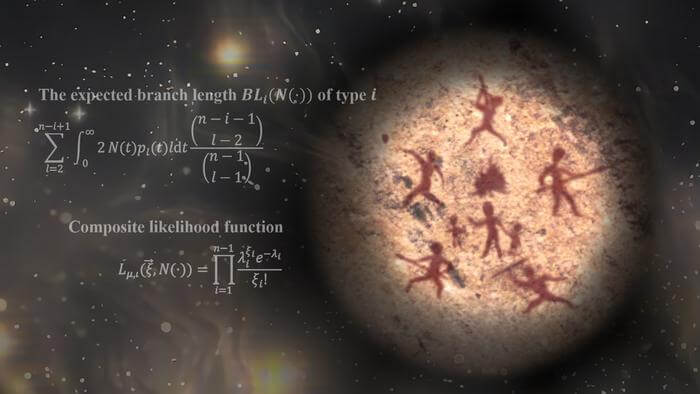A groundbreaking method called FitCoal has shed light on a severe population bottleneck in early human history, potentially threatening the future of humanity as we know it today.
Researchers from China, Italy, and the United States employed FitCoal, a fast infinitesimal time coalescent process, to analyze modern-day human genomic sequences from 3,154 individuals. Their findings reveal that early human ancestors experienced a prolonged bottleneck in which approximately 1,280 breeding individuals sustained a population for about 117,000 years. This bottleneck resulted in a significant loss of genetic diversity, with an estimated 65.85% of current genetic diversity being lost during the early to middle Pleistocene era.
The research, published in Science on August 31, 2023, suggests that this bottleneck in the Early Stone Age coincided with a significant loss of fossil evidence in the African and Eurasian fossil records. Climate-related factors, such as glaciation events, temperature changes, severe droughts, and loss of other species, potentially used as food sources for ancestral humans, are believed to be the main reasons for this downturn in the human ancestral population.
“The novel finding opens a new field in human evolution because it evokes many questions, such as the places where these individuals lived, how they overcame the catastrophic climate changes, and whether natural selection during the bottleneck has accelerated the evolution of human brain,” says senior author Yi-Hsuan Pan, an evolutionary and functional genomics at East China Normal University (ECNU).
While the bottleneck posed a threat to humanity, it also played a role in a speciation event, possibly leading to the convergence of two ancestral chromosomes into what is now known as chromosome 2 in modern humans. This discovery may offer insights into the last common ancestor of Denisovans, Neanderthals, and modern humans (Homo sapiens).
However, the revelation of this bottleneck has raised numerous questions about where these early humans lived, how they survived catastrophic climate changes, and whether natural selection during the bottleneck accelerated the evolution of the human brain. Researchers are eager to explore these questions further and gain a deeper understanding of human evolution during this Early to Middle Pleistocene transition period.
“These findings are just the start. Future goals with this knowledge aim to paint a more complete picture of human evolution during this Early to Middle Pleistocene transition period, which will in turn continue to unravel the mystery that is early human ancestry and evolution,” says senior author LI Haipeng, a theoretical population geneticist and computational biologist at Shanghai Institute of Nutrition and Health, Chinese Academy of Sciences (SINH-CAS).


